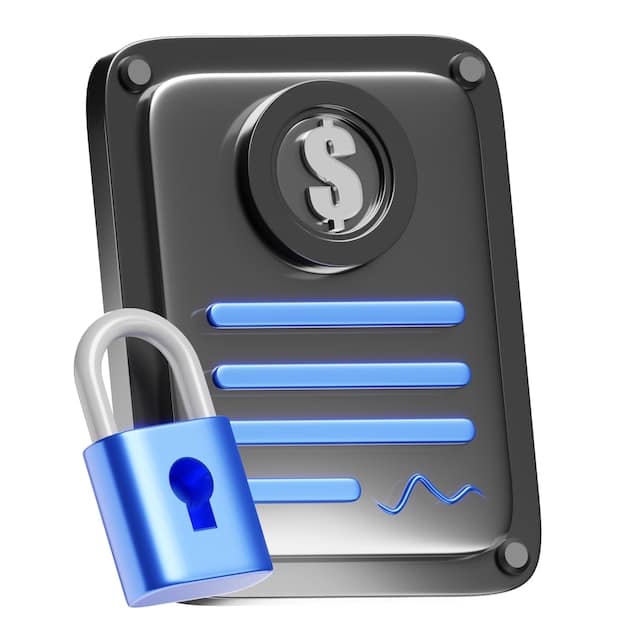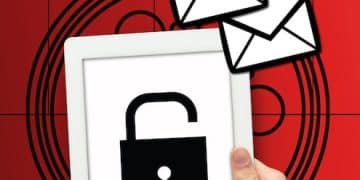Is Your Social Security Number Exposed? 5 Steps to Check in 2025

Protecting your Social Security number (SSN) from exposure is crucial in 2025; learn five essential steps to check if your SSN has been compromised and how to secure it effectively.
In an era of increasing digital threats, safeguarding your Social Security number (SSN) is more critical than ever. This guide outlines five actionable steps to determine if your SSN has been exposed and how to secure it in 2025.
Why Protecting Your SSN Matters
Your Social Security number is a unique identifier that’s become a key to accessing your personal and financial information. Its importance cannot be overstated, as it’s used for everything from opening bank accounts to applying for loans and even securing employment. Understanding the risks associated with SSN exposure is the first step in protecting yourself.
When your SSN falls into the wrong hands, the consequences can be severe. Identity theft, financial fraud, and damage to your credit score are just a few of the potential outcomes. Criminals can use your SSN to apply for credit cards, file fraudulent tax returns, or even obtain medical services in your name. This not only causes immediate financial loss but can also lead to long-term legal and bureaucratic headaches.
The Rising Threat of SSN Exposure
Data breaches are becoming increasingly common, exposing the personal information of millions of people. These breaches can occur at large corporations, government agencies, or even small businesses. Once your SSN is compromised in a data breach, it can be sold on the dark web and used for various malicious purposes.
- Data Breaches: Major companies experiencing breaches can expose your SSN.
- Phishing Scams: Deceptive emails or calls trick you into revealing your SSN.
- Mail Theft: Physical theft of mail containing your SSN.
- Unsecured Websites: Entering your SSN on non-secure websites.
Taking proactive steps to protect your SSN is essential in today’s digital landscape. Monitoring your credit report, being cautious of phishing scams, and securing your online accounts are all important measures to reduce your risk.
Understanding the importance of protecting your SSN and the various ways it can be exposed is crucial for taking effective action to safeguard your identity and financial well-being. By staying informed and vigilant, you can minimize your vulnerability to identity theft and fraud.
Step 1: Check for Data Breach Notifications
The first crucial step in ensuring your Social Security number is secure is to actively check for any data breach notifications. Companies and organizations that have experienced a data breach often have a legal obligation to notify affected individuals, providing you with an early warning if your information has been compromised.
Responding promptly to these notifications can significantly mitigate potential damage. Data breach notifications typically include instructions on what steps you should take to protect yourself, such as monitoring your credit report or placing a fraud alert on your account. Ignoring these notifications can leave you vulnerable to identity theft and other forms of fraud.

How to Find Data Breach Information
Checking for data breach notifications can be done through various sources. Many companies will directly email or mail you a notification if your information has been compromised. Additionally, there are online resources that track and report on data breaches, allowing you to search for specific incidents that may have affected you.
Websites like Have I Been Pwned? allow you to enter your email address to see if it has been involved in any known data breaches. The IdentityTheft.gov website from the Federal Trade Commission (FTC) also provides information and resources on data breaches and how to protect yourself.
- Check Email: Regularly review your email for notifications from companies or services you use.
- Use Online Tools: Utilize websites like Have I Been Pwned? to check for breaches involving your email.
- Monitor Credit Reports: Keep an eye on your credit reports for any suspicious activity.
Staying informed and actively seeking out data breach information is a proactive way to protect your SSN and personal data. By taking swift action when a breach occurs, you can minimize the potential for identity theft and financial fraud.
Checking for data breach notifications is not just a one-time task but an ongoing effort to stay informed about potential threats to your personal information. Make it a regular part of your routine to ensure that you are always one step ahead of potential identity thieves.
Step 2: Monitor Your Credit Report Regularly
Regularly monitoring your credit report is a critical step in protecting your Social Security number and preventing identity theft. Your credit report contains detailed information about your credit history, including credit accounts, payment history, and any inquiries made by lenders. By reviewing this report, you can identify any unauthorized activity or suspicious changes that may indicate your SSN has been compromised.
Detecting fraudulent activity early can significantly limit the damage caused by identity theft. If you notice any accounts or inquiries that you don’t recognize, it’s essential to take immediate action to investigate and report the issue to the credit bureaus and relevant financial institutions. This proactive approach can help prevent further misuse of your SSN and protect your financial well-being.
Accessing Your Credit Report
Under federal law, you are entitled to one free credit report from each of the three major credit bureaus – Equifax, Experian, and TransUnion – every 12 months. You can access these reports by visiting AnnualCreditReport.com, the only official website authorized to provide free credit reports. Be cautious of other websites that may claim to offer free credit reports, as they may be scams or try to sell you unnecessary services.
Review your credit report carefully for any red flags, such as new accounts you didn’t open, incorrect personal information, or unfamiliar inquiries. Even small discrepancies can be signs of identity theft, so it’s important to investigate any questionable items thoroughly.
- AnnualCreditReport.com: Access your free credit reports from Equifax, Experian, and TransUnion.
- Review for Discrepancies: Look for unauthorized accounts, incorrect information, or unfamiliar inquiries.
- Stagger Your Reports: Check one report every four months for ongoing monitoring.
Monitoring your credit report regularly is a simple yet effective way to protect your SSN and prevent identity theft. By staying vigilant and taking prompt action when necessary, you can safeguard your financial identity and maintain a healthy credit profile.
Make it a habit to review your credit report at least once a year, or even more frequently if you have reason to believe your SSN may be at risk. This proactive approach is an essential component of comprehensive identity theft protection.
Step 3: Set Up a Fraud Alert or Credit Freeze
Setting up a fraud alert or credit freeze is a powerful way to protect your Social Security number and prevent unauthorized access to your credit information. Both options offer increased security but work in different ways, so understanding the distinctions is essential to choosing the best option for your situation.
A fraud alert is a notice placed on your credit report that requires lenders to take extra steps to verify your identity before issuing credit in your name. It makes it more difficult for identity thieves to open fraudulent accounts, as lenders are required to contact you to confirm that you are indeed applying for credit. This added layer of verification can help prevent identity theft and protect your credit.
Fraud Alert vs. Credit Freeze
A credit freeze, also known as a security freeze, goes a step further by completely restricting access to your credit report. When a credit freeze is in place, lenders cannot view your credit report, making it virtually impossible for them to approve new credit applications in your name. This is a highly effective way to prevent identity theft, but it also means that you will need to lift the freeze temporarily if you want to apply for credit yourself.
Deciding between a fraud alert and a credit freeze depends on your level of concern and your need for easy access to credit. A fraud alert is a good option if you suspect your SSN may be at risk or if you want an extra layer of protection without restricting your access to credit. A credit freeze is a more drastic measure that provides maximum protection but requires more effort when you need to apply for credit.
- Fraud Alert: Requires lenders to verify your identity before issuing credit.
- Credit Freeze: Restricts access to your credit report, preventing new credit applications.
- Consider Your Needs: Choose the option that best balances security and convenience for you.

Setting up a fraud alert or credit freeze is a proactive step that can significantly reduce your risk of identity theft. By taking control of your credit information and implementing these security measures, you can safeguard your SSN and protect your financial well-being.
Whether you choose a fraud alert or a credit freeze, be sure to monitor your credit report regularly and take immediate action if you notice any suspicious activity. These security measures are most effective when combined with ongoing vigilance and proactive monitoring.
Step 4: Secure Your Online Accounts
In today’s digital age, securing your online accounts is essential for protecting your Social Security number and preventing identity theft. Cybercriminals often target online accounts to steal personal information, including SSNs, which can then be used for fraudulent purposes. Taking proactive steps to secure your online accounts can significantly reduce your risk.
Strong passwords, two-factor authentication, and regularly updating your security settings are all important measures to protect your online accounts. By implementing these best practices, you can create a strong defense against cyber threats and safeguard your personal information.
Password Management and Two-Factor Authentication
Using strong, unique passwords for each of your online accounts is a fundamental aspect of online security. Avoid using easily guessable passwords, such as your name, birthday, or common words. Instead, opt for passwords that are at least 12 characters long and include a combination of uppercase and lowercase letters, numbers, and symbols.
Two-factor authentication (2FA) adds an extra layer of security to your online accounts by requiring a second form of verification in addition to your password. This can be a code sent to your phone, a biometric scan, or a security key. Even if a cybercriminal manages to obtain your password, they will still need to bypass the second authentication factor to access your account.
- Use Strong Passwords: Create unique, complex passwords for each account.
- Enable Two-Factor Authentication: Add an extra layer of security with 2FA.
- Update Security Settings: Regularly review and update your privacy settings.
Securing your online accounts is an ongoing process, not a one-time task. Regularly update your passwords, enable two-factor authentication whenever possible, and stay informed about the latest security threats. By taking these proactive steps, you can significantly reduce your risk of becoming a victim of identity theft.
Protecting your online accounts is a critical component of comprehensive SSN protection. Combine these security measures with regular credit monitoring and fraud alerts for a comprehensive defense against identity theft.
Step 5: Be Cautious of Phishing Scams
Being cautious of phishing scams is crucial for protecting your Social Security number and preventing identity theft. Phishing scams are fraudulent attempts to trick you into revealing personal information, such as your SSN, bank account numbers, or passwords. These scams often come in the form of emails, text messages, or phone calls that appear to be from legitimate organizations.
Recognizing and avoiding phishing scams can save you from falling victim to identity theft and financial fraud. Be skeptical of unsolicited requests for personal information, and always verify the legitimacy of the source before providing any sensitive data. A healthy dose of skepticism can go a long way in protecting your SSN and personal information.
Identifying and Avoiding Phishing Attempts
Phishing scams often use deceptive tactics to trick you into providing personal information. They may impersonate government agencies, financial institutions, or other reputable organizations. These scams often create a sense of urgency, threatening consequences if you don’t respond immediately.
Always be wary of unsolicited requests for your SSN or other sensitive information. Legitimate organizations will rarely ask for this information via email or phone call. If you receive a suspicious request, contact the organization directly to verify its legitimacy. Use a phone number or website address that you know to be genuine, rather than the one provided in the suspicious communication.
- Be Skeptical: Question unsolicited requests for personal information.
- Verify Legitimacy: Contact the organization directly to confirm the request.
- Report Suspicious Activity: Report phishing attempts to the FTC.
Being cautious of phishing scams is a critical component of comprehensive SSN protection. Combine this vigilance with strong passwords, two-factor authentication, and regular credit monitoring for a robust defense against identity theft.
Staying informed about the latest phishing tactics and being skeptical of unsolicited requests can help you avoid becoming a victim of identity theft. Protect your SSN by always verifying the legitimacy of any organization requesting your personal information.
| Key Point | Brief Description |
|---|---|
| 🚨 Data Breach Check | Regularly check for notifications of data breaches that may compromise your SSN. |
| 💳 Credit Monitoring | Monitor your credit reports for unauthorized activity and discrepancies. |
| 🔒 Security Measures | Set up fraud alerts or credit freezes to restrict access to your credit information. |
| 🌐 Online Security | Secure your online accounts with strong passwords and two-factor authentication. |
Frequently Asked Questions (FAQ)
▼
A Social Security number (SSN) is a nine-digit number issued to U.S. citizens, permanent residents, and temporary (working) residents. It’s used to track an individual’s lifetime earnings and the number of years worked.
▼
Protecting your SSN is crucial because it’s a key identifier used for various purposes, including opening bank accounts, applying for credit, and securing employment. If compromised, it can lead to identity theft.
▼
If you suspect your SSN has been exposed, monitor your credit report, set up a fraud alert, and consider a credit freeze. Report any suspicious activity to the Social Security Administration and the FTC.
▼
You can use online tools like “Have I Been Pwned?” to check if your email address has been involved in any known data breaches. This can help you identify potential exposures of your personal information.
▼
Signs of identity theft include unauthorized transactions on your credit report, unfamiliar accounts opened in your name, and unexpected calls or emails from debt collectors. Monitor your credit report regularly for these signs.
Conclusion
Securing your Social Security number in 2025 requires a proactive and vigilant approach. By following these five steps—checking for data breaches, monitoring your credit report, setting up fraud alerts or credit freezes, securing your online accounts, and being cautious of phishing scams—you can significantly reduce your risk of identity theft and protect your financial well-being.





